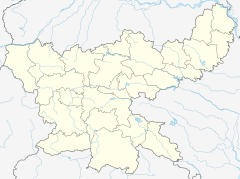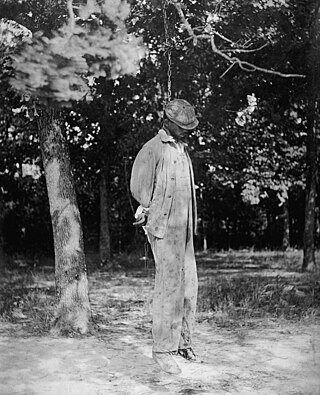
Lynching is an extrajudicial killing by a group. It is most often used to characterize informal public executions by a mob in order to punish an alleged transgressor, punish a convicted transgressor, or intimidate people. It can also be an extreme form of informal group social control, and it is often conducted with the display of a public spectacle for maximum intimidation. Instances of lynchings and similar mob violence can be found in every society.

Jharkhand is a state in eastern India. The state shares its border with the states of West Bengal to the east, Chhattisgarh to the west, Uttar Pradesh to the northwest, Bihar to the north and Odisha to the south. It is the 15th largest state by area, and the 14th largest by population. Hindi is the official language of the state. The city of Ranchi is its capital and Dumka its sub-capital. The state is known for its waterfalls, hills and holy places; Baidyanath Dham, Parasnath, Dewri and Rajrappa are major religious sites. Jharkhand is primarily rural, with about 24% of its population living in cities.

Jamshedpur, also known as Tatanagar, is the largest and most populous city in Jharkhand and the first planned industrial city in India. It is a Notified Area Council and Municipal Corporation and also the headquarter of the East Singhbhum district. It is a popular tourist destination known for its forests, ancient temples and royal palaces. It was ranked as the cleanest city of India in the year 2019.
Chaibasa is a small urban city and a municipality in West Singhbhum district in the state of Jharkhand, India. Chaibasa is the district headquarters of West Singhbhum district. It is also the headquarter of Singhbhum Kolhan division headed by the Divisional commissioner. It consists of the main city including Sadar Bazar, Garikhana, Bari Bazar, Amla Tola, Sentola, Railway Station Area, JMP Chowk, Post Office Chowk and Gandhi Tola; and the surrounding suburbs and entry gates to the city including Tambo Chowk, Tungri, Khapparsai, Mochisai, Gutusai and Purana Chaibasa.

Singhbhum was a district of India during the British Raj, part of the Chota Nagpur Division of the Bengal Presidency. It was located in the present-day Indian state of Jharkhand. Chaibasa was the district headquarters. Located in the southern limit of the Chota Nagpur Plateau, Singhbhum included the Kolhan estate located in its southeastern part. The district has been segmented into two smaller districts, East Singhbhum and West Singhbhum.
Adityapur is a city and suburb in Jamshedpur, Jharkhand, India. It is a nagar parishad in the Seraikela Sadar subdivision in the Seraikela Kharsawan district. Adityapur is part of the Greater Jamshedpur, under the Indian government's Jawaharlal Nehru National Urban Renewal Mission (JNNURM). It is separated from Jamshedpur by the Kharkai River.
Chandil is a census town in the Chandil CD block in the Chandil subdivision of Seraikela Kharsawan district in the state of Jharkhand, India.
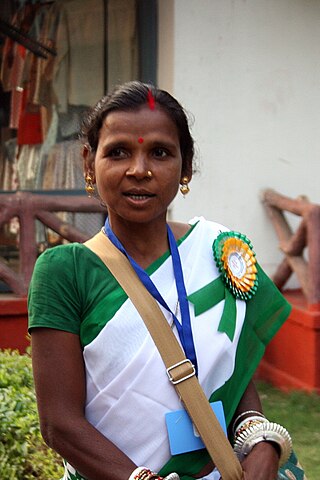
The Ho people are an Austroasiatic Munda ethnic group of India. They are mostly concentrated in the Kolhan region of Jharkhand and northern Odisha where they constitute around 10.7% and 7.3% of the total Scheduled Tribe population respectively, as of 2011. With a population of approximately 700,000 in the state in 2001, the Ho are the fourth most numerous Scheduled tribe in Jharkhand after the Santals, Kurukhs, and Mundas. Ho also inhabit adjacent areas in the neighbouring states of Odisha, West Bengal and Bihar bringing the total to 806,921 as of 2001. They also live in Bangladesh and Nepal.
Manbhumi or Manbhumi Bengali is the local Bengali dialect spoken in the district of Purulia, and adjacent area of other districts of West Bengal and Jharkhand, previously Manbhum, in Eastern India. It is one of the Bengali dialects, having some influences of neighbouring dialects of Hindi and Odia in it.
2016 Jharkhand mob lynching refers to the case of lynching of three Muslim cattle traders by allegedly cattle-protecting vigilantes in Balumath forests of Latehar district in the Indian state of Jharkhand on 18 March 2016. The attackers killed 32 year old Mazlum Ansari and 12 year old Imtiaz Khan who were both found hanging from a tree.

The 2017 Alwar mob lynching was the attack and murder of Pehlu Khan, a dairy farmer from Nuh district of Haryana, allegedly by a group of 200 cow vigilantes affiliated with right-wing Hindutva groups in Behror in Alwar, Rajasthan, India on 1 April, 2017. Six others who were with Pehlu Khan were also beaten by the cow vigilantes.
Cow vigilante violence is a pattern of mob-based collective vigilante violence seen in India. The attacks are perpetuated by Hindu nationalists against non-Hindus to protect cows, which are considered sacred in Hinduism.

The 2017 Nowhatta mob lynching, was the lynch mob murder and mutilation of an on-duty undercover Indian Jammu and Kashmir Police officer Muhammad Ayub Pandith, on the Muslim holy night of Laylat al-Qadr on Thursday 22 June 2017 by a mob in Nowhatta after a crowd shouted slogans in favor of Pakistan as well as al-Qaida jihadist Zakir Musa. Sajjad Ahmad Gilkar, a Hizbul Mujahideen militant, had played a key role in the lynching according to the state police.
The Indian WhatsApp lynchings are a spate of mob-related violence and killings following the spread of rumours, primarily relating to child-abduction and organ harvesting, via the WhatsApp message service. The spate of lynchings commenced in May 2017 with the killing of seven men in Jharkhand, but did not become a matter of national attention until the beginning of the following year. Fake messages customised with locally specific details are circulated along with real videos attached to fake messages or claims.
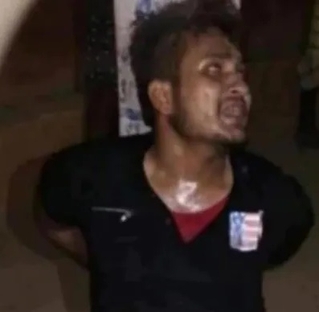
On 17 June 2019, 24-year-old Tabrez Ansari was attacked by a lynch mob in Jharkhand, India. Ansari, a Muslim, was tied to a tree, brutally beaten and forced to chant Hindu religious slogans. He died four days later. The incident came to light after a video of the lynching went viral. The attackers accused him of bike theft. India's Prime Minister commented on this lynching in the Parliament of India.
On 16 April 2020, a vigilante group lynched two Hindu Sadhus and their driver in Gadchinchale Village, Palghar District, Maharashtra, India. The incident was fuelled by WhatsApp rumours of thieves operating in the area during the countrywide coronavirus lockdown. The vigilante group of villagers had mistaken the three passengers as thieves and killed them. Policemen who intervened were also attacked; four policemen and a senior police officer were injured.
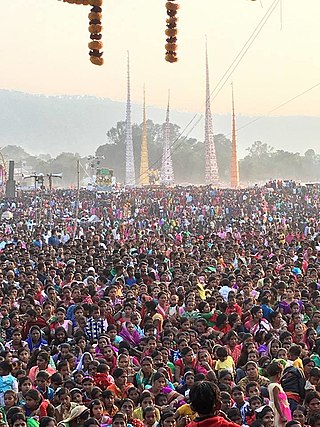
Chandil block is a CD block that forms an administrative division in the Chandil subdivision of Seraikela Kharsawan district, in the Indian state of Jharkhand.
Purihasa is a census town in the Golmuri-cum-Jugsalai CD block in the Dhalbhum subdivision of the Purbi Singhbhum district in the Indian state of Jharkhand.

